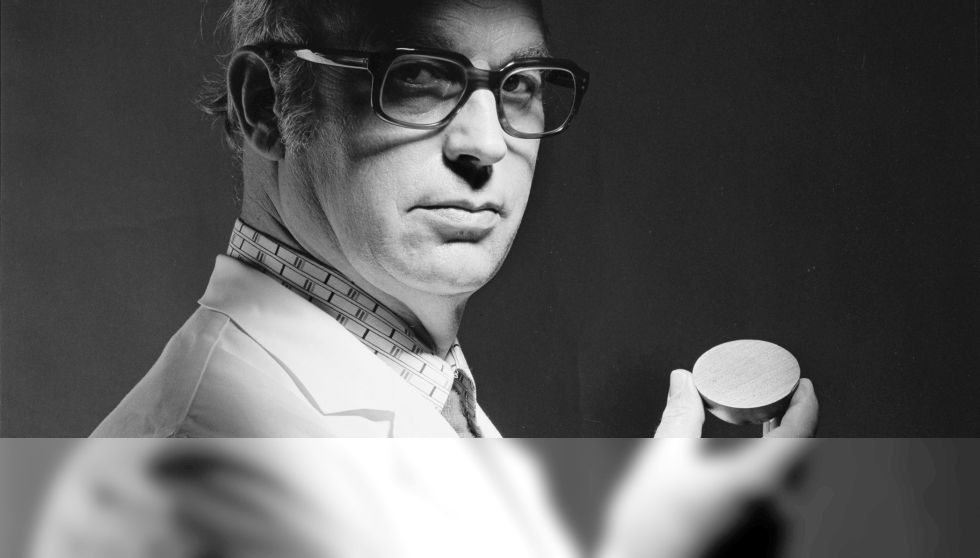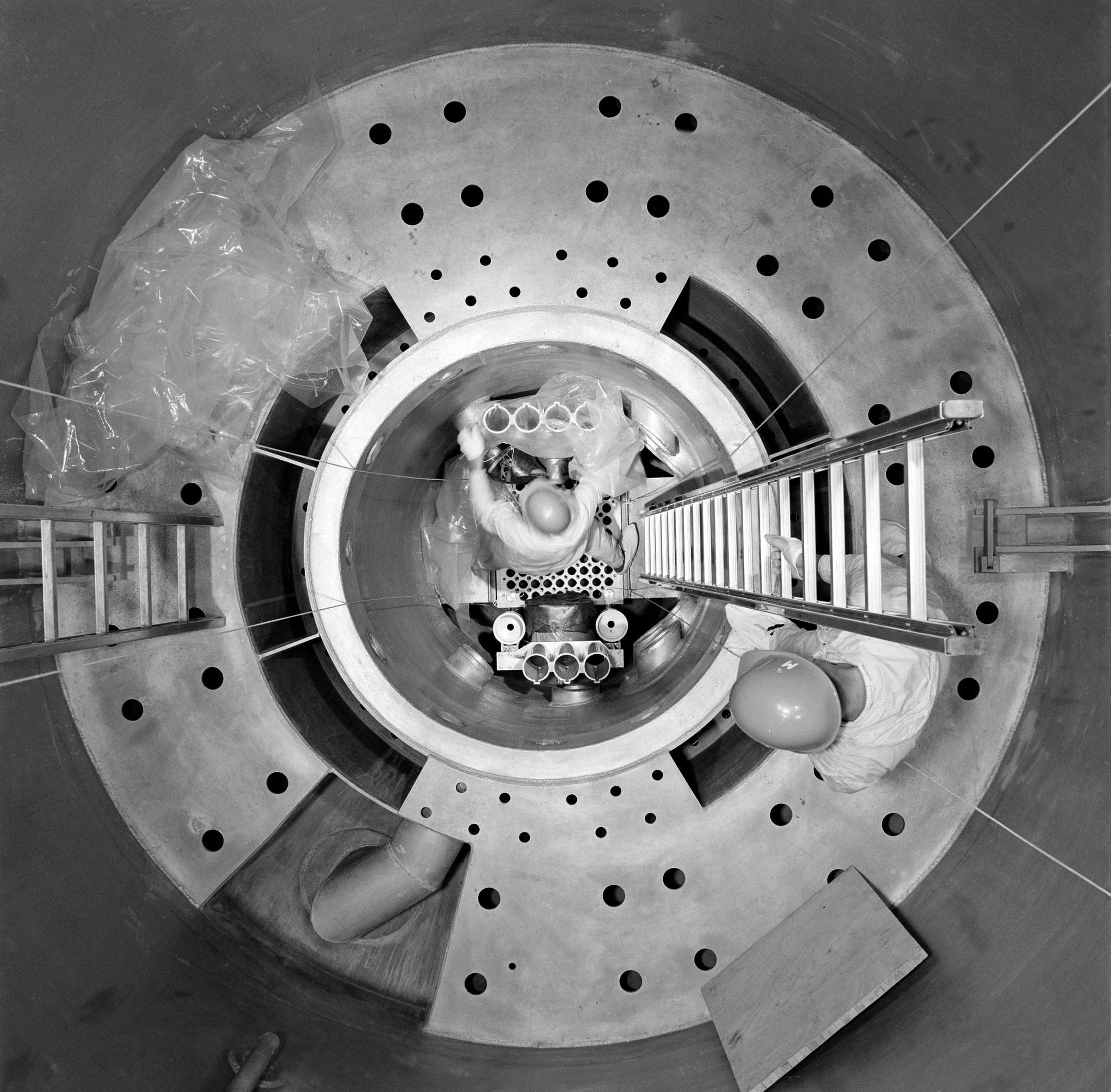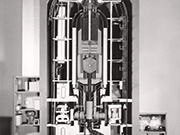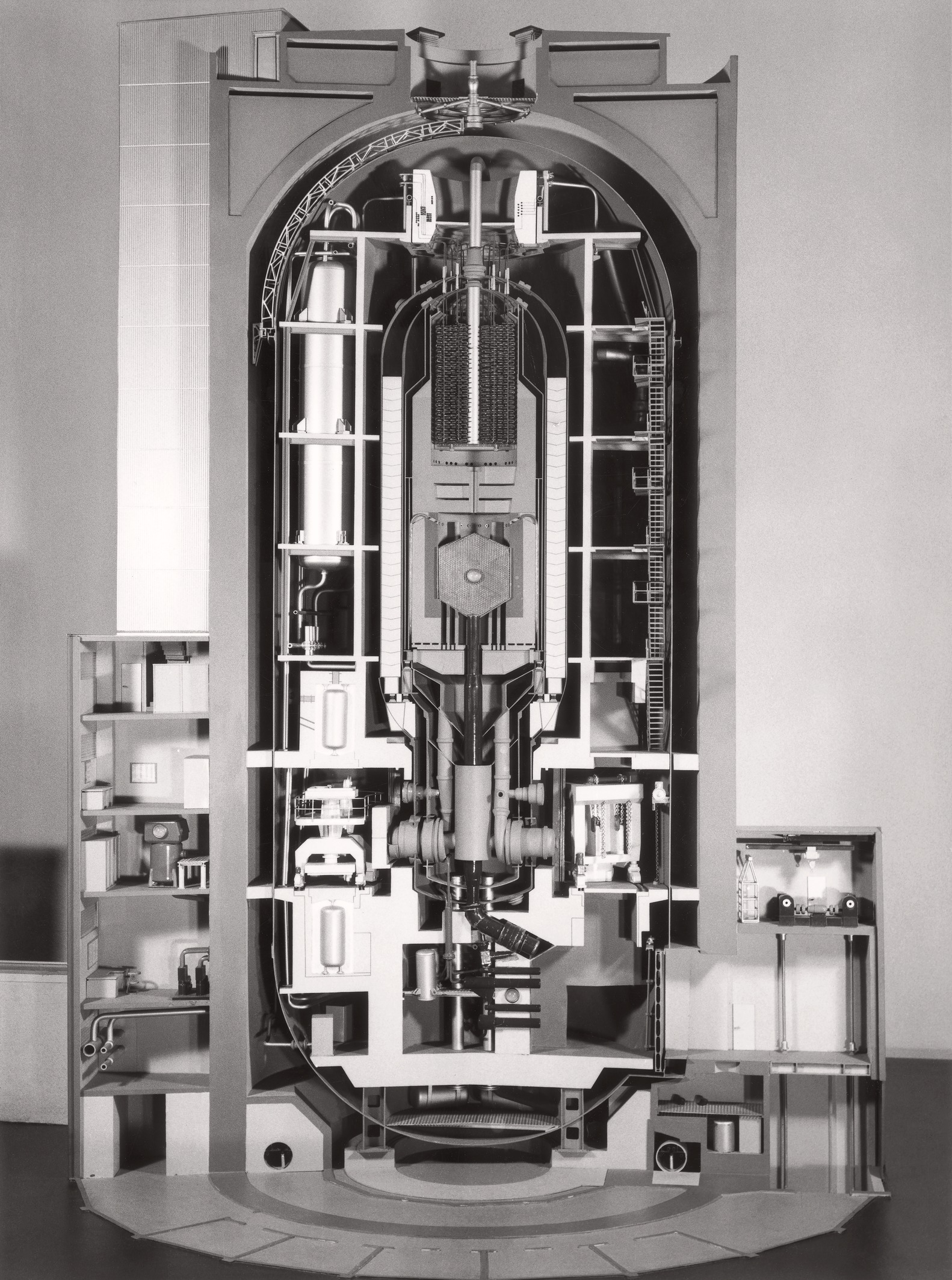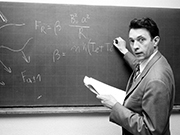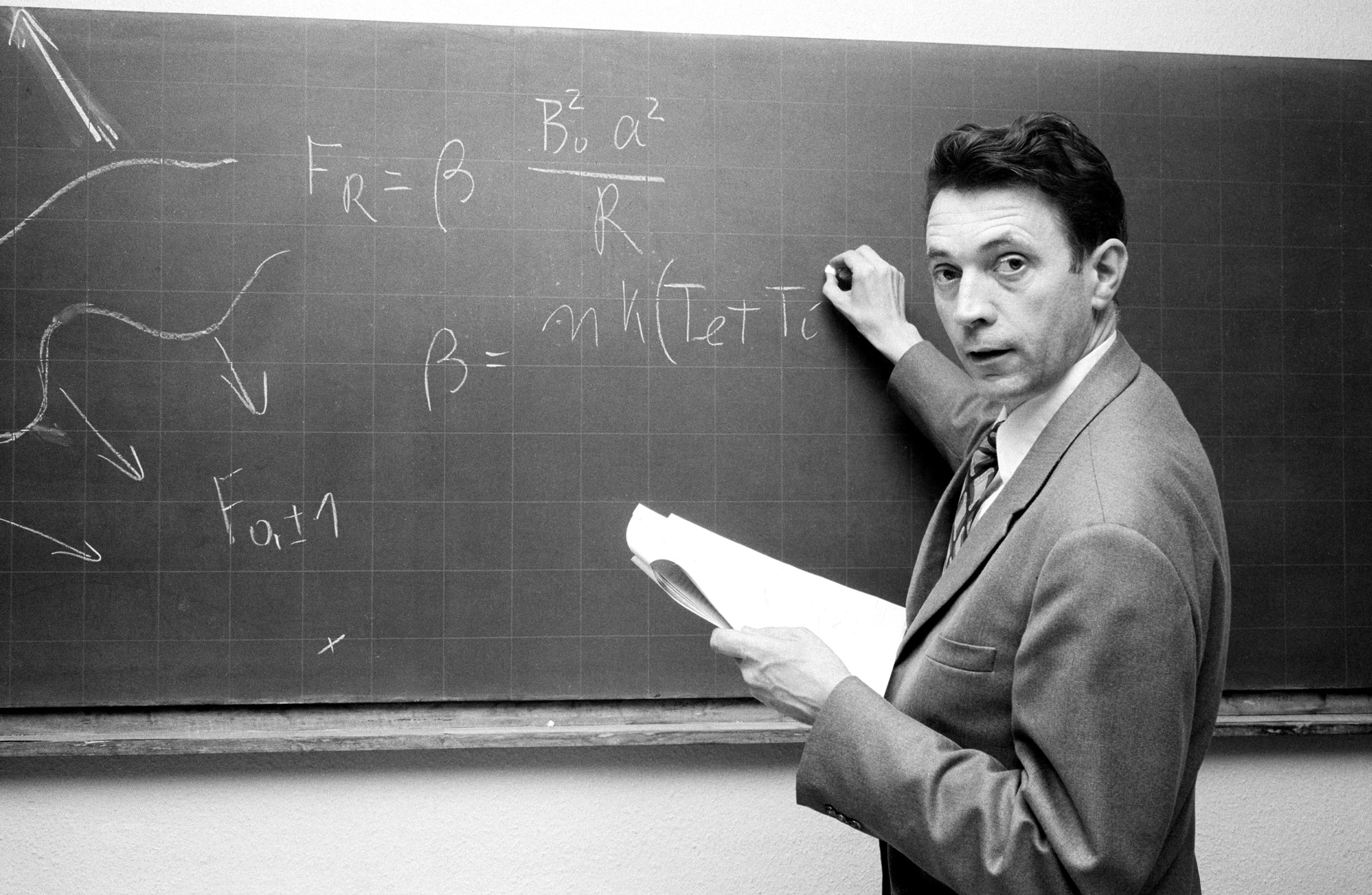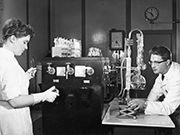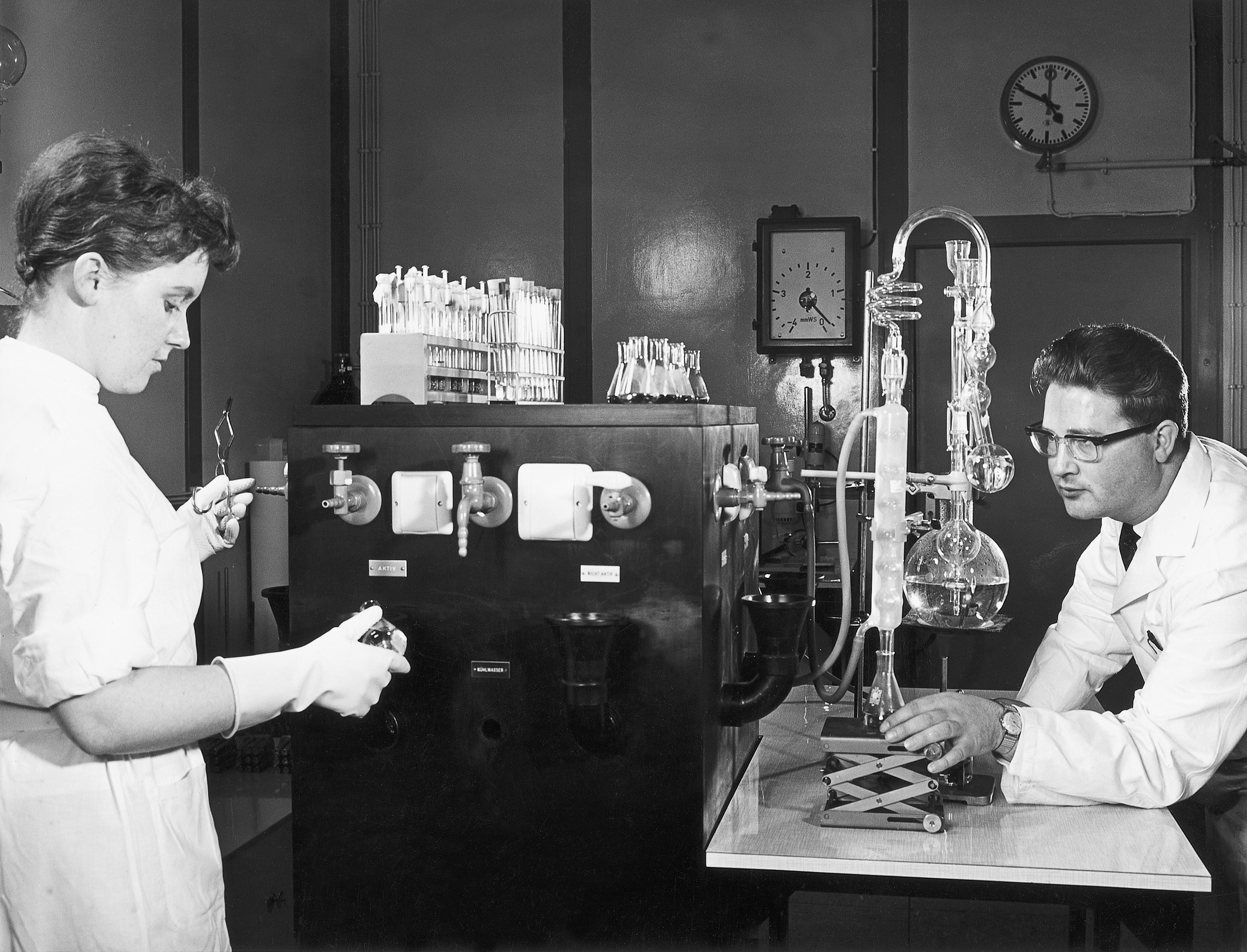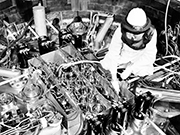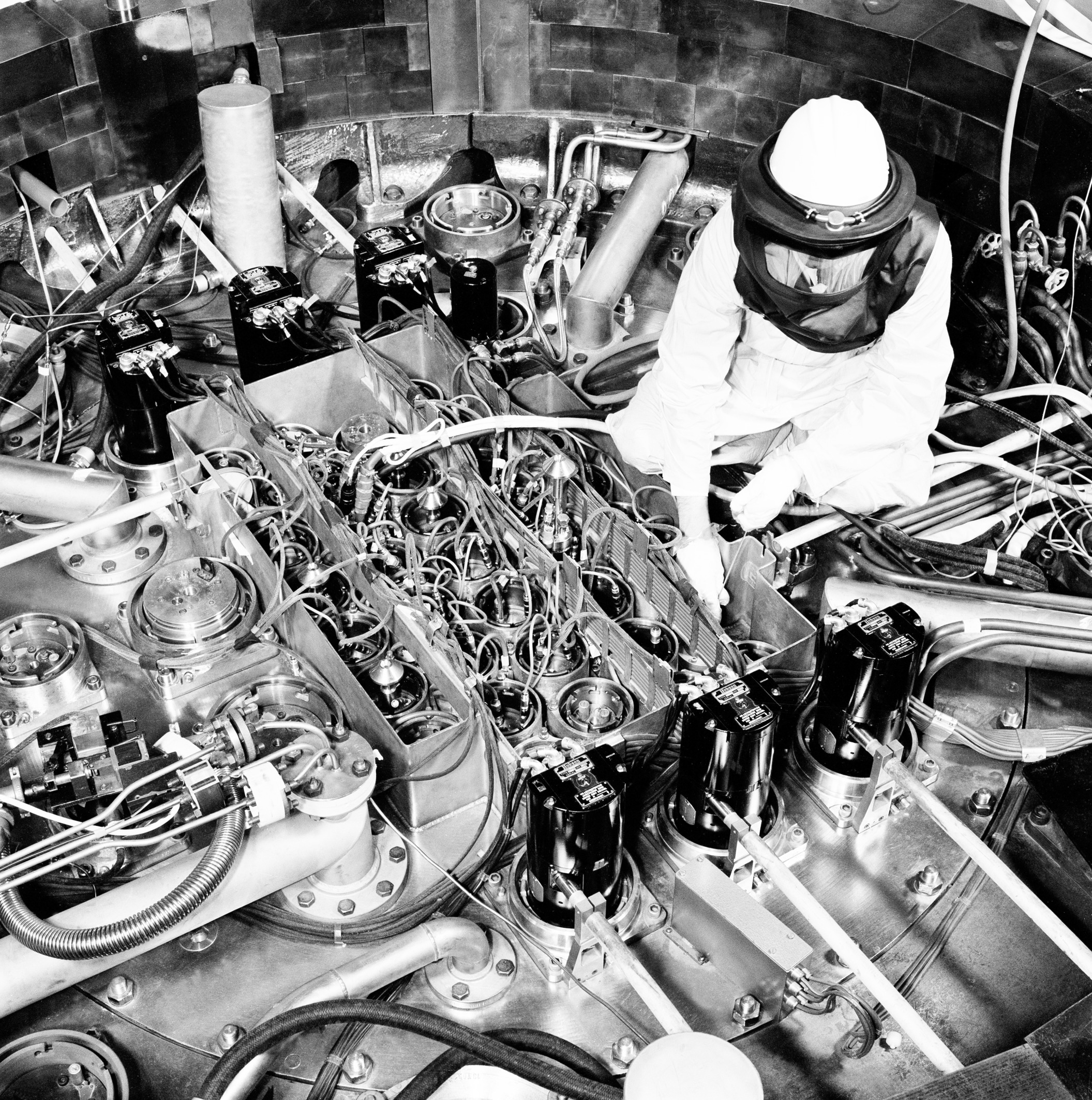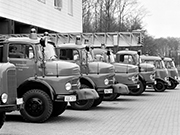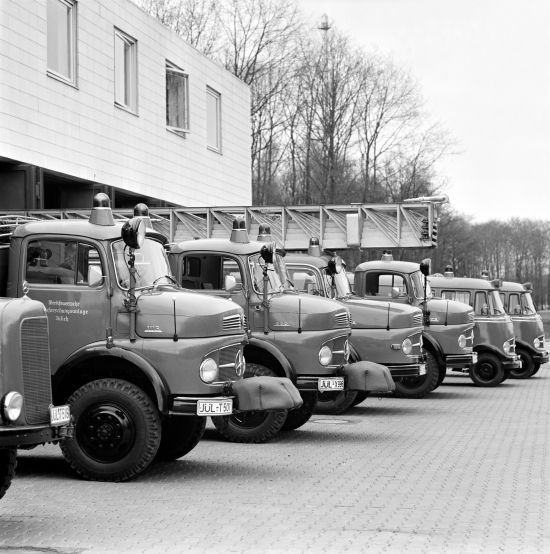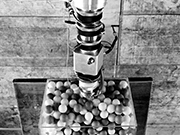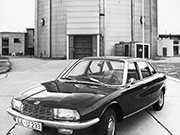The research reactors started operation in 1962. With a library, lecture theatre, and the Central Institute for Applied Mathematics, a scientific infrastructure was taking shape. Jülich established links with EURATOM (the European Atomic Energy Community) and German industry.
When North Rhine-Westphalia’s state finances were stretched to the limit in the 1960s, the establishment’s future was threatened. In 1968 the federal government stepped in, with a 50 percent share to start with that was later increased to 90 percent.
Arbeitsgemeinschaft Versuchsreaktor GmbH (AVR), a joint venture involving 15 energy companies, built a high-temperature reactor next to the KFA site. Once this experimental reactor began to produce electricity in 1967, interest grew in projects with spherical fuel elements. The AVR reactor was the starting point for subsequent research and development work on high-temperature reactor technology at Jülich.
While the early focus of research was on "the atom" and on power generation, soon the scientists were also working on environmental research and agriculture. Nuclear medicine was a particular area of interest right from the start.
Pressures and mergers
While the expectations of research were high, public funding became limited as the economic miracle came to an end. Following years of seemingly boundless growth, West Germany experienced a slight recession for the first time in 1967. Justifying high expenditure on research became difficult in North Rhine-Westphalia as the coal crisis took its toll and the boom years in the Ruhr region ended. In 1963 alone, 13 pits were closed; 10,000 people lost their jobs.
The now renamed Federal Ministry of Scientific Research sought to centralize control of the activities it funded; the research centres joined forces to protect their interests. In 1970, the informal group of all the administrative managing directors of West Germany’s nuclear research centres – nicknamed the "reactor fraternity" – formed the Arbeitsgemeinschaft der Großforschungseinrichtungen (Association of National Research Centres) (AGF), from which the Helmholtz Association evolved in 1995.
Daten
| 1961 | The nuclear research establishment is officially opened by the Prime Minister of North Rhine-Westphalia, Franz Meyers, in the presence of the Nobel laureate Otto Hahn |
| 1961 | The Institute of Biology is founded |
| 1961 | The first open day attracts 2,706 visitors |
| 1962 | Start-up of the MERLIN and DIDO reactors |
| 1962 | The Central Electronics Laboratory is founded |
| 1964 | The Institutes of Reactor Materials, Neutron Physics, and Medicine are founded |
| 1967 | Conversion to a limited company (GmbH) |
| 1967 | The Nuclear Physics Institute is founded, and the isochronous cyclotron JULIC is built to investigate elementary constituents of matter using accelerated particles |


